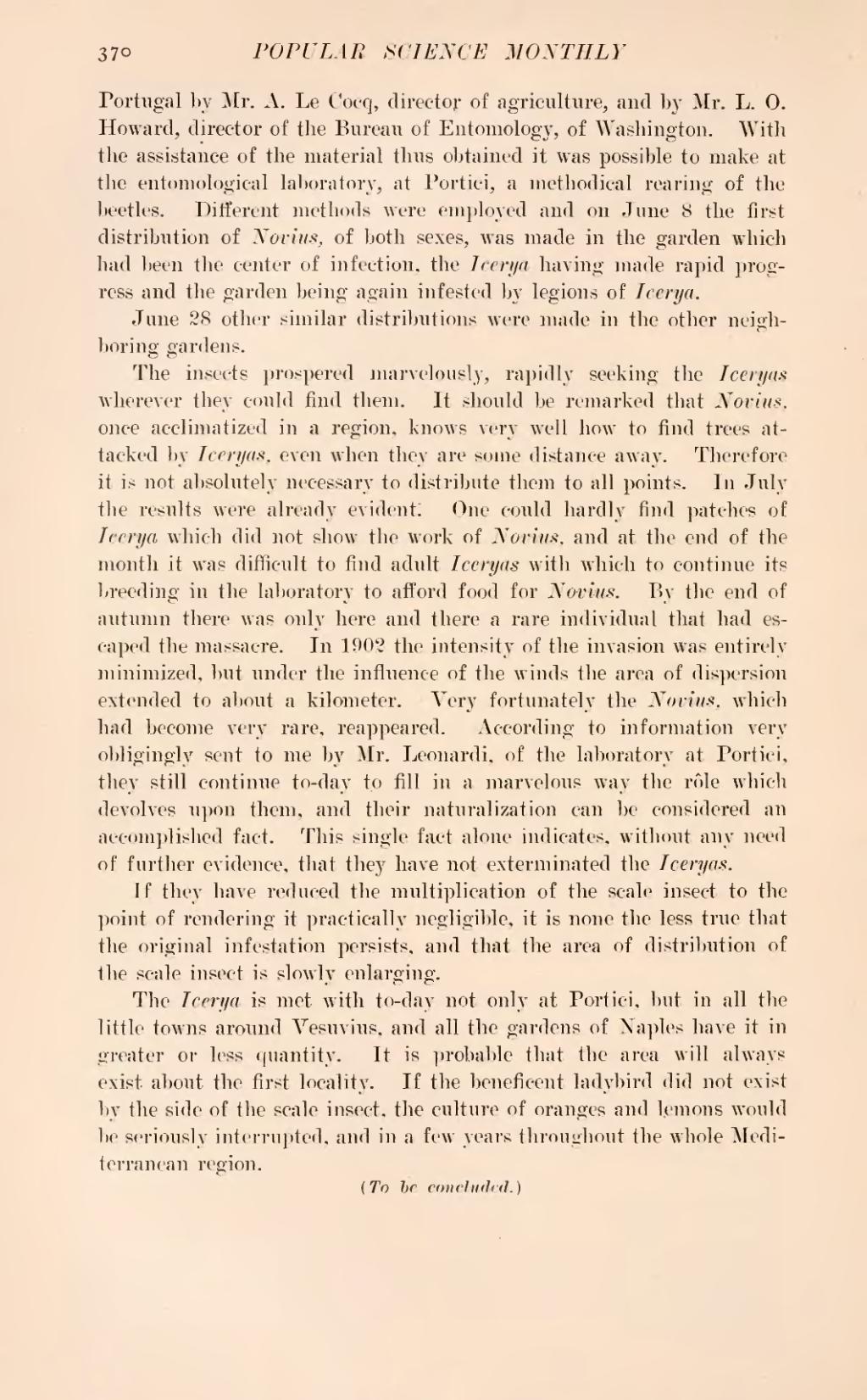Portugal by Mr. A. Le Cocq, director of agriculture, and by Mr. L. O. Howard, director of the Bureau of Entomology, of Washington. With the assistance of the material thus obtained it was possible to make at the entomological laboratory, at Portici, a methodical rearing of the beetles. Different methods were employed and on June 8 the first distribution of Novius, of both sexes, was made in the garden which had been the center of infection, the Icerya having made rapid progress and the garden being again infested by legions of Icerya.
June 28 other similar distributions were made in the other neighboring gardens.
The insects prospered marvelously, rapidly seeking the Iceryas wherever they could find them. It should be remarked that Novius, once acclimatized in a region, knows very well how to find trees attacked by Iceryas, even when they are some distance away. Therefore it is not absolutely necessary to distribute them to all points. In July the results were already evident. One could hardly find patches of Icerya which did not show the work of Novius, and at the end of the month it was difficult to find adult Iceryas with which to continue its breeding in the laboratory to afford food for Novius. By the end of autumn there was only here and there a rare individual that had escaped the massacre. In 1902 the intensity of the invasion was entirely minimized, but under the influence of the winds the area of dispersion extended to about a kilometer. Very fortunately the Novius, which had become very rare, reappeared. According to information very obligingly sent to me by Mr. Leonardi, of the laboratory at Portici, they still continue to-day to fill in a marvelous way the role which devolves upon them, and their naturalization can be considered an accomplished fact. This single fact alone indicates, without any need of further evidence, that they have not exterminated the Iceryas.
If they have reduced the multiplication of the scale insect to the point of rendering it practically negligible, it is none the less true that the original infestation persists, and that the area of distribution of the scale insect is slowly enlarging.
The Icerya is met with to-day not only at Portici, but in all the little towns around Vesuvius, and all the gardens of Naples have it in greater or less quantity. It is probable that the area will always exist about the first locality. If the beneficent ladybird did not exist by the side of the scale insect, the culture of oranges and lemons would be seriously interrupted, and in a few years throughout the whole Mediterranean region.
(To be concluded.)
